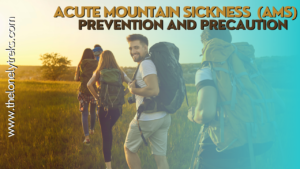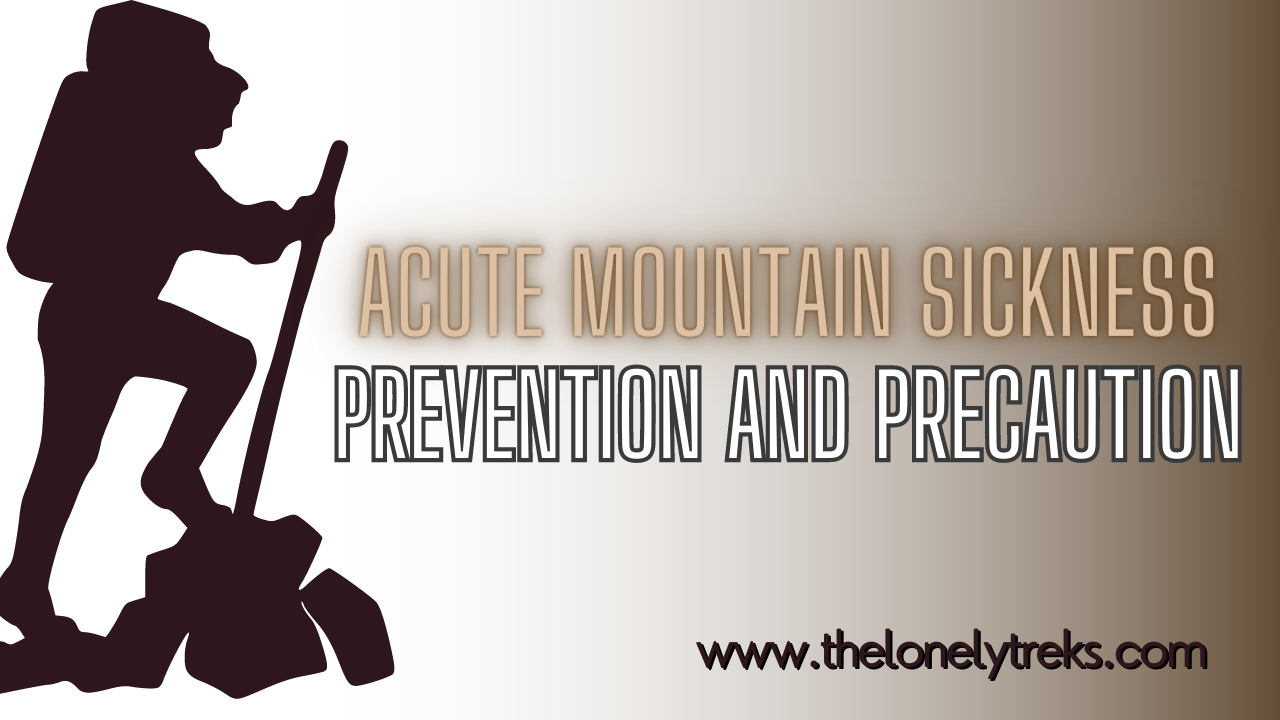When it comes to seeking thrilling adventures amidst stunning natural landscapes, high-altitude trekking takes center stage. Scaling the lofty peaks and venturing into the picturesque trails offers an exhilarating experience. However, it’s essential to be aware of the risks associated with acute mountain sickness (AMS) and take appropriate measures to ensure a safe and enjoyable trekking expedition. In this article, we will delve into AMS, its symptoms, preventive strategies, and the significance of proper precautions before embarking on a high-altitude trekking adventure.
Contents
ToggleHigh Altitude Trekking: A Thrilling Journey
Embarking on a high-altitude trekking adventure presents an incredible opportunity to immerse yourself in nature’s beauty and test your limits. From challenging terrains to breathtaking panoramas, these trails captivate adventurers from all walks of life. However, it’s crucial to understand the potential risks and prepare accordingly to mitigate the chances of AMS.
Understanding Acute Mountain Sickness (AMS)
AMS is a common condition that occurs when the body is exposed to high altitudes without sufficient acclimatization. It arises due to reduced oxygen levels and atmospheric pressure at higher elevations. AMS can affect anyone, irrespective of physical fitness or trekking experience. Recognizing the symptoms and adopting preventive measures are vital to ensure a safe and enjoyable trek.
Recognizing the Symptoms of AMS
Timely identification of AMS symptoms is crucial for prompt intervention. Common signs include headaches, nausea, dizziness, fatigue, loss of appetite, shortness of breath, and sleep disturbances. If any of these symptoms manifest during your trek, it’s essential not to ignore them and take appropriate actions to prevent the condition from worsening.
Acute Mountain Sickness (AMS) : Prevention and Precautions
Prevention is the key to combating Acute Mountain Sickness (AMS) effectively. Here are some important precautions to consider before embarking on a high-altitude trek:

Gradual Acclimatization
Allocate sufficient time for your body to acclimatize to higher elevations by incorporating rest days into your trekking itinerary. A gradual ascent and spending a day or two at intermediate altitudes will aid your body in adjusting, reducing the risk of AMS.
Hydration and Nutrition
Stay hydrated by drinking plenty of fluids, preferably water, and avoid excessive alcohol consumption. Maintain a balanced diet rich in carbohydrates and electrolytes to energize your body during the trek.
Medication for AMS
Consult a healthcare professional before your trek and inquire about medications that can help prevent or alleviate AMS symptoms. Common medications include acetazolamide, which aids acclimatization, and ibuprofen for relieving headaches. However, it’s crucial to take these medications under medical supervision.
Recognize AMS and Descend
If AMS symptoms worsen despite preventive measures, it’s vital to recognize the condition and take appropriate action. Descending to a lower elevation immediately is the most effective treatment for AMS. Don’t hesitate to inform your trek leader or group about any symptoms experienced by yourself or fellow trekkers.
The Importance of Trekking Guides
Trekking guides play a crucial role in ensuring your safety and well-being during high-altitude treks. They possess valuable knowledge about the terrain, weather conditions, and prevention of AMS. Listen to their advice, follow their instructions, and communicate openly about any discomfort or symptoms experienced.

Conclusion
Embarking on a high-altitude trekking adventure is an incredible experience that allows you to explore nature’s wonders. However, it’s essential to be aware of the risks associated with AMS. By recognizing the symptoms, taking preventive measures, and seeking medical assistance when necessary, you can minimize the risks and enjoy a safe and memorable trekking experience in breathtaking landscapes.
Recommended Reading:
FAQ
Most frequent questions and answers
In rare cases, AMS can progress to severe forms of altitude sickness, such as high altitude pulmonary edema (HAPE) or high altitude cerebral edema (HACE), which can be life-threatening. Timely recognition and proper treatment of AMS help prevent its progression. This usually happens in difficult trekking expeditions like Everest Expedition.
Yes, proper acclimatization before any trekking expedition is highly recommended. Proper acclimatization significantly reduces the risk of AMS. Allowing your body to gradually adjust to higher altitudes minimizes the chances of developing severe symptoms.
Trekking in high-altitude regions requires a certain level of physical fitness and preparation. It’s important to assess your fitness level, seek medical advice if needed, and choose treks that suit your abilities.
While several alternative remedies for AMS, such as herbal preparations or natural remedies, are available, their effectiveness hasn’t been scientifically proven. It’s best to rely on proven preventive measures and consult a healthcare professional if needed.
If you experience AMS symptoms during a hike, it’s crucial to inform your trek leader or group leader immediately. They can assess your condition and guide you on the necessary steps, which may include descending to a lower elevation and seeking medical assistance.
Recent Posts
- 10 Popular Tourist Places in Himachal Pradesh
- 14 Best Treks in Himachal Pradesh, India
- Bali Indonesia’s Island Paradise
- Trekking Shoes: The Ultimate Guide to Choosing the Perfect Pair
- The Ultimate Camping Tents for Unforgettable Outdoor Adventures
- Delhi Metro Complete Guide
- Travel Luggage
- 5 Must-Have Travel Books
- Conquering Acute Mountain Sickness (AMS) in High Altitude Mountains
- Lansdowne: A Charming Hill Station









